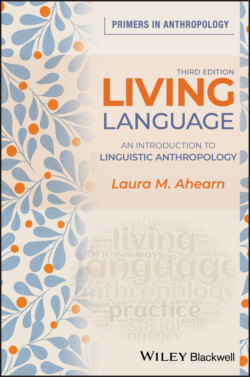Читать книгу Living Language - Laura M. Ahearn - Страница 21
Keith Basso
ОглавлениеKeith Basso’s (1996) ethnography, Wisdom Sits in Places: Landscape and Language Among the Western Apache, explores “place-making” as a linguistic and cultural activity. This book was written after Ronnie Lupe, chairman of the White Mountain Apache tribe, asked Basso to help make some maps: “Not whitemen’s maps, we’ve got plenty of them, but Apache maps with Apache places and names. We could use them. Find out something about how we know our country. You should have done this before” (Basso 1996:xv). When Basso took up this suggestion and traveled with Apache horsemen to hundreds of locations in the region, he began to notice how place names were used in everyday Apache conversations in ways that were very new to him. He also spoke with consultants, asking about the stories associated with various places. Through entertaining vignettes and engrossing storytelling, Basso explains how the richly descriptive Western Apache uses of language and place names (such as “Whiteness Spreads Out Descending to Water,” “She Carries Her Brother on her Back,” and “Shades of Shit”) help reinforce important Apache cultural values. For example, Western Apache speakers invoke these place names in conversations to allude indirectly to cautionary tales from recent or ancient history that may be relevant to the current speakers’ dilemmas. This practice, called “speaking with names,” is a verbal routine that “allows those who engage in it to register claims about their own moral worth, about aspects of their social relationships with other people on hand, and about a particular way of attending to the local landscape that is avowed to produce a beneficial form of heightened self-awareness” (Basso 1996:81). In this book, then, Basso shows how the physical environment is filtered through language to solidify social relations and strengthen Western Apache notions of wisdom and morality.
